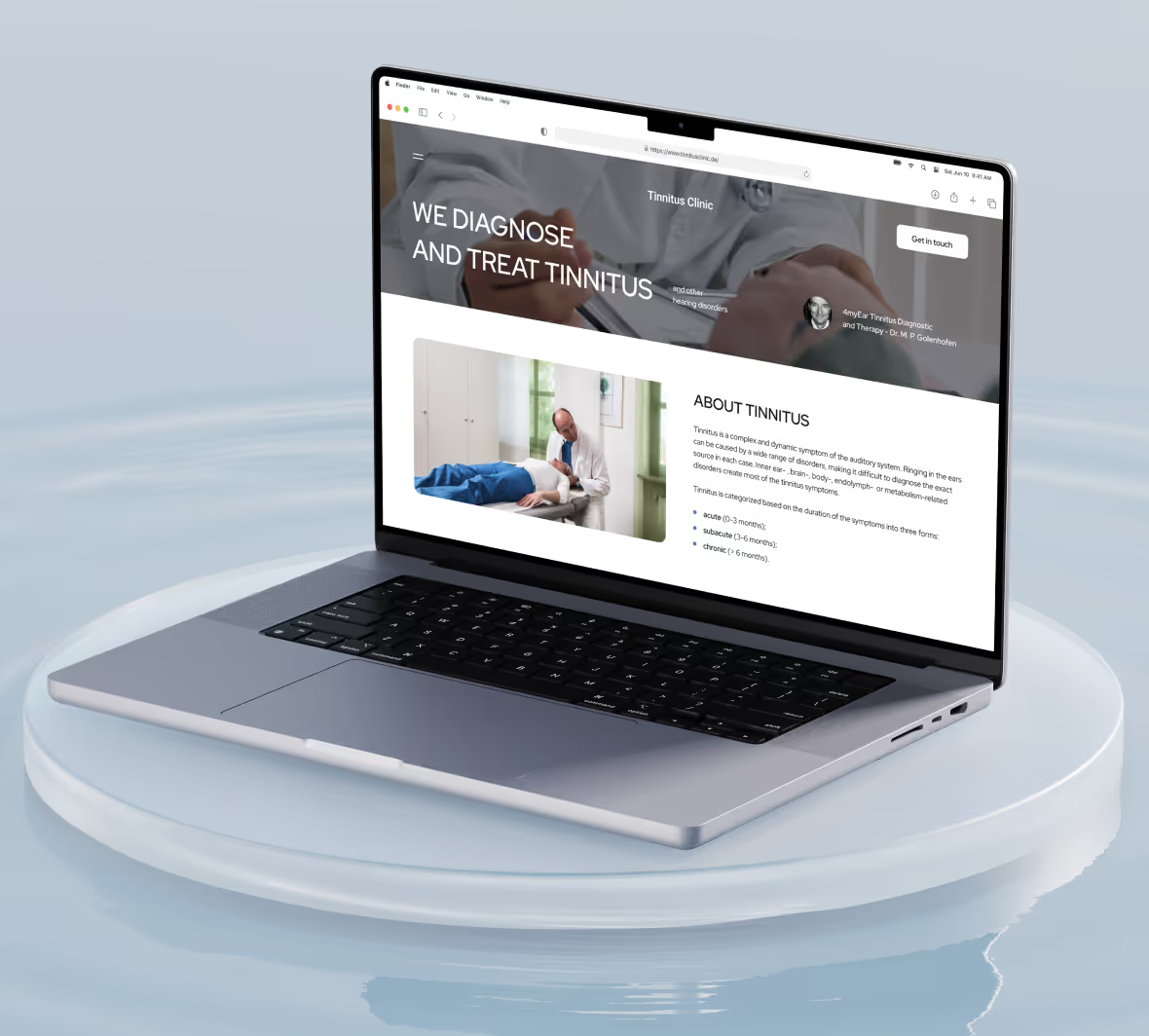
You have an excellent idea for a startup. You’ve done your research, and you’re excited to move forward. But then, you start thinking about all the features you want to build into your product to attract customers and impress investors. Suddenly, your simple idea for a startup is starting to feel overwhelming. Before moving forward with your MVP, you must build an entire product to get started. The truth is, you don’t.
You can use the Lean Startup method to create a Minimum Viable Product (MVP) to save time, money, and stress. This approach allows you to build a simple version of your idea to attract early users and learn what you need to develop next. If you want to understand how this process works, especially for No Code MVP development, keep reading. This guide will tell you everything you need about Lean Startup MVPs.
No Code MVP development can help you quickly research your market and target audience to build a product aligned with their needs. If you need help with this process, Minimum Code’s no-code development solutions can help you launch your MVP quickly.
What Is The Origin of Lean Startup?
.jpeg)
The Lean Startup Methodology: A Game Changer for Entrepreneurs
Lean startup is a transformative approach to developing businesses and products. Developed by Eric Ries, it emphasizes the importance of validated learning, rapid experimentation, and customer feedback, enabling startups to create products that meet market needs efficiently. This methodology is rooted in the principles of lean manufacturing, which aim to minimize waste while maximizing value.
The Origins of Lean Startup
The Lean Startup methodology was inspired by lean manufacturing principles, which focus on eliminating waste and optimizing processes. Eric Ries introduced this approach in his 2011 book, "The Lean Startup," where he shared his experiences and the framework he developed while working with various startups. The methodology has since gained traction among entrepreneurs and innovators, becoming a staple in startup culture.
Key Principles of Lean Startup
At the core of the Lean Startup methodology is the Build-Measure-Learn feedback loop. This iterative cycle encourages startups to develop a minimum viable product (MVP), measure its performance in the market, and learn from the outcomes. This process allows for quick adjustments based on customer feedback, ensuring that the product evolves according to real user needs rather than assumptions.
Build
Start by creating a simple product version that includes only the essential features needed to solve a specific customer problem. The focus is on speed to market rather than perfection.
Measure
After launching the MVP, gather data on user interactions and satisfaction. Metrics can include user engagement, retention rates, and customer feedback. The aim is to assess whether the product is meeting its intended goals.
Learn
Analyze the data collected to gain insights into customer preferences and behaviors. This learning should inform decisions about whether to pivot (change direction), persevere (continue on the current path), or iterate (make minor improvements).
Customer-Centric Development
A fundamental aspect of the Lean Startup methodology is its focus on customer input. Startups are encouraged to engage directly with their target audience to understand their pain points and needs. This approach minimizes the risk of developing products that do not resonate with users, a common pitfall in traditional product development methods.
Rapid Iteration
Lean Startup promotes rapid iteration, which involves frequently refining the product based on customer feedback. This method accelerates the development process and fosters a culture of continuous improvement within the organization. Startups can make incremental changes that lead to significant improvements over time.
Related Reading
- MVP in Scrum
- MVP Testing Methods
- Minimum Viable Product vs Prototype
- Types of MVPs
- Minimum Viable Product Examples
- MVP in Agile
- MVP Marketing
- MVP App Development
- Build MVP
- Prototype vs MVP
- MVP Testing
The Importance of MVP in the Lean Startup Methodology

Unlocking Success with an MVP
In the Lean Startup framework, the Minimum Viable Product (MVP) is a crucial concept that is the foundation for product development and market entry. An MVP is a stripped-down product version that includes only the essential features needed to fulfill the primary needs of early adopters. By focusing on delivering the core value proposition, startups can validate their ideas and gather actionable insights from real users.
Why MVP Matters
Risk Reduction
The MVP approach helps mitigate the risks of launching a new product. Traditional product development often involves significant investment in time and resources without adequate validation. By launching an MVP, startups can test their hypotheses with minimal investment, allowing them to identify whether there is a market fit before committing to further development. This iterative process ensures that resources are not wasted on products that do not meet user needs.
Faster Time to Market
Being first can provide a competitive edge in today's fast-paced business environment. The MVP approach allows startups to enter the market quickly, enabling them to start learning from fundamental customer interactions sooner. This speed facilitates faster iterations based on user feedback and will allow startups to establish a presence in the market before competitors.
Customer Feedback and Insights
An MVP provides startups with a unique opportunity to collect valuable user feedback. By engaging with early adopters, businesses can gather insights on what features are essential, what improvements are needed, and how users interact with the product. This direct feedback loop is critical for refining and aligning the product with customer expectations.
Focus on Core Features
The MVP forces startups to prioritize the most critical features that address customer pain points. This focus on the essentials prevents feature bloat and helps teams avoid the common pitfall of over-engineering products. By honing in on what truly matters to users, startups can create a more compelling product experience.
Facilitates Pivoting
Sometimes, the initial MVP may resonate with users differently than expected. The Lean Startup methodology encourages flexibility, allowing startups to pivot their business model or product direction based on the insights gained from the MVP. This adaptability can lead to discovering new opportunities that better align with market demands.
Examples of Successful MVPs
Many well-known companies started with an MVP that laid the groundwork for their eventual success:
Dropbox
Before building the full-fledged product, Dropbox created a simple explainer video illustrating its core features. This video attracted many sign-ups, validating the demand for the product before it was fully developed.
Airbnb
The founders of Airbnb initially offered their apartment as a short-term rental to validate the concept. By testing the waters with a minimal offering, they gathered insights that shaped the platform into what it is today.
Zappos
The online shoe retailer Zappos began testing the market with a simple website. The founder would take photos of shoes from local stores and list them online. When customers placed orders, he would purchase the shoes and ship them. This method confirmed the demand for online shoe sales before entirely investing in inventory and logistics.
With Minimum Code, you can finally bring your long-held business idea to life quickly and efficiently without breaking the bank. Bring your long-held business ideas to life with us. Get a free product discovery and scoping for your app idea today!
Related Reading
- MVP Features
- MVP Development Process
- How to Build an MVP
- MVP Developer
- MVP Benefits
- SaaS MVP Development
- MVP Development for Startups
- Develop MVP
- How to Build an MVP App
- MVP Development Cost
Steps to Building a Lean Startup MVP

1. Find Your People Before You Build Anything
Before you start building your product, you need to figure out who it’s for. Identifying your target audience will inform your decisions throughout the MVP process and help you create something people want. Conduct market research using surveys, interviews, and competitor analysis to gather data on your audience’s needs, preferences, and pain points. This research should help you create user personas that embody your target market. Next, define user needs. Identify the core problems your audience faces that your product intends to solve. This step ensures that your MVP is relevant and valuable to potential users.
2. Nail Down the Core Problem Your MVP Will Address
Once you understand your audience, clearly articulate the core problem you want to solve. Write a concise problem statement that describes the issue your target audience faces. This clarity will guide your product development efforts. Next, develop a value proposition articulating how your product will address this problem. What unique value does your solution offer compared to existing alternatives? This value proposition will be central to your MVP.
3. Prioritize Features for Your MVP
With a defined problem and solution, the next step is to outline the essential features that will comprise your MVP. List all possible features of your product. Include everything that you envision could enhance the user experience. Use the MoSCoW method to classify features into four categories: Must-Have, Should-Have, Could-Have, and Won't-Have. Focus primarily on the Must-Have features that directly address your problem statement. Ensure that the features you prioritize deliver a smooth user experience. The goal is to make it easy for early adopters to understand the product's value.
4. Develop Your MVP Prototype
Once you have your prioritized feature set, it's time to create a prototype or an MVP version of your product. Depending on your resources and technical capabilities, choose between building the MVP in-house, outsourcing development, or using no-code/low-code platforms. Focus on developing a product that is functional yet simple. The goal is to deliver enough value to engage users without overcomplicating the product. Don’t aim for perfection in your first version. Instead, focus on speed and functionality. This approach aligns with the Lean Startup principle of rapid iteration based on feedback.
5. Test Your MVP and Gather Feedback
The final step in building an MVP is to release it to a select group of early adopters and collect feedback. Deploy your MVP to a small segment of your target audience. This approach allows you to test your product in a controlled environment. Use surveys, interviews, and analytics to gather insights on user experiences. Pay attention to how users interact with your product and the challenges they encounter.
Assess the feedback collected to identify patterns and critical areas for improvement. Use this data to iterate on your product, enhancing features or pivoting your approach as needed. By following these steps, startups can create an MVP that addresses user needs and paves the way for further development based on real-world insights. This iterative cycle of building, measuring, and learning is fundamental to the Lean Startup methodology.
Why Minimum Code is Your Best No-Code Partner
We are a no-code development agency tailored for non-technical entrepreneurs looking to launch B2B SaaS or service web apps quickly. Our expertise lies in using tools like Bubble.io, Xano.com, and Webflow to deliver MVPs within a month. Why you should work with us: We offer rapid development speed, cost-effectiveness compared to traditional methods, scalable and secure solutions, and full-service support from design to post-launch.
We're ideal for founders who've experienced lengthy traditional development cycles or need a technical co-founder. Our approach solves common pain points like needing more tech skills, no-code scalability, security concerns, and the desire to focus on business while we handle the tech. With Minimum Code, you can finally bring your long-held business idea to life quickly and efficiently without breaking the bank. Bring your long-held business ideas to life with us! Reach out today for a free product discovery & scoping session, and see how our no-code development agency can help you turn your vision into reality.
Lean Startup MVP Metrics and Evaluation

Define Key Performance Indicators (KPIs)
KPIs are quantifiable measurements that reflect the critical success factors of your MVP. Selecting the right KPIs helps you understand user engagement, satisfaction, and overall product effectiveness.
User Acquisition Metrics
Track how many users are signing up or using your MVP. Key indicators include:
Sign-Up Rate
The percentage of visitors who convert to users.
Cost Per Acquisition (CPA)
The total cost of acquiring a new user.
Engagement Metrics
Measure how users interact with your MVP. Important engagement metrics include:
- Daily Active Users (DAU): The number of unique users who engage with your product daily.
- Session Duration: The average time users spend using the product per session.
- Retention Metrics: Assess how well your MVP keeps users engaged over time:
- Churn Rate: The percentage of users who stop using your product within a specific timeframe.
- Retention Rate: The percentage of users who continue to use the product after a defined period.
Use Qualitative Feedback
In addition to quantitative metrics, qualitative feedback provides insights into user experiences and perceptions.
User Interviews
Conduct one-on-one interviews with users to gain deeper insights into their experiences, challenges, and suggestions for improvement.
Surveys and Questionnaires
Create short surveys to collect feedback on specific features, usability, and overall satisfaction. Tools like Google Forms or SurveyMonkey can streamline this process.
Customer Support Interactions
Analyze customer support queries to identify common pain points and areas for improvement. This can inform feature enhancements and the overall user experience.
Analyze Data and Draw Insights
Once you have collected quantitative and qualitative data, it’s essential to analyze the information to identify trends and actionable insights.
Data Analysis Tools
Utilize analytics platforms such as Google Analytics, Mixpanel, or Hotjar to track user behavior and engagement patterns. These tools can provide visualizations and reports to help interpret the data.
Identify Patterns
Look for trends in user behavior, such as common drop-off points in the user journey or features that users find most valuable. Understanding these patterns will guide your decisions on what to improve or pivot your approach entirely.
Prioritize Changes
Based on your insights, prioritize the features or changes significantly impacting user satisfaction and engagement. This prioritization ensures that resources are allocated effectively.
Iterate Based on Feedback
The Lean Startup methodology emphasizes continuous improvement through iterative cycles of testing and learning.
Plan for Iteration
Based on the feedback and data analysis, outline a plan for enhancing your MVP. Decide whether to implement quick fixes, introduce new features, or pivot your approach entirely.
Release Updates
Implement changes in more minor, manageable updates rather than significant overhauls. This strategy allows you to incrementally test new features with users and collect feedback on each update.
Retest and Validate
After making changes, retest your MVP with the same or new users to validate the effectiveness of your updates. This process ensures you’re moving in the right direction and aligns your product closer to user needs.
Document Learnings
Finally, it’s essential to document what you have learned throughout the MVP development and evaluation process.
Create a Knowledge Base
Maintain a repository of insights, user feedback, and data analyses. This knowledge base will reference future product iterations and team discussions.
Share Insights with Stakeholders
Communicate your findings and the rationale behind product decisions regularly to team members and stakeholders. Transparency fosters collaboration and encourages input from various perspectives.
Get a Free Product Discovery & Scoping for Your App Idea Today
Minimum Code MVP development focuses on creating a simple, functional prototype for SaaS or service web apps that require minimal coding. Development relies on no-code tools and templates instead of traditional coding. These no-code solutions help founders quickly build a solid MVP to test with real users to gather feedback. This approach allows entrepreneurs to efficiently prove their business concept and uncover technical issues before investing in a fully coded application.
Related Reading
- MVP Development Team
- Launching an MVP
- MVP Tools
- MVP Validation
- MVP Timeline
- No Code Agencies
- Creating an MVP

Ready to build your product?







